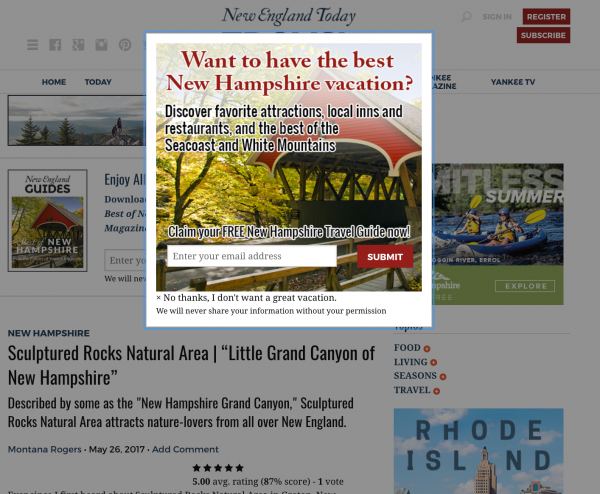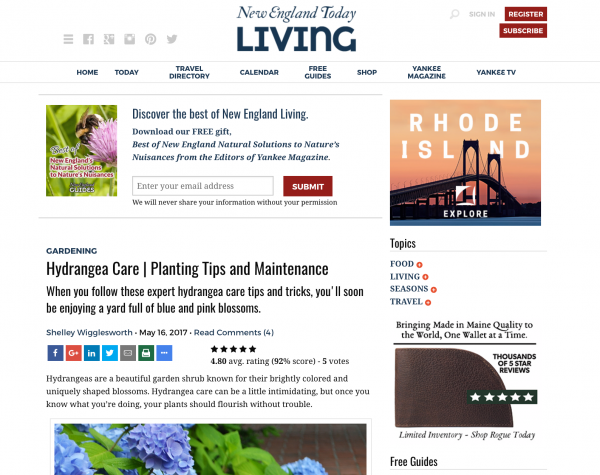Website conversion architecture best practices haven’t seen much change in recent years, but Google’s January announcement called for a new set of rules.
Over the last 3-6 months desktop and mobile conversion best practices have changed in response to Google, who continues to challenge us in an effort to make the web a more pleasant place to search and learn.
If necessity is the mother of invention, then adversity is the father. And Google has given us some adverse conditions to work with as they try to accommodate the rise in mobile devices, and the rise in mobile traffic.
[text_ad]
If we weren’t responding to all these changes for our clients, they would see dramatic drops in their email conversion rates. And while we saw some drops, the many adjustments we have made with each client individually has helped keep most email capture rates steady. Everyone else online who hasn’t been paying as close attention has seen a 50% drop in their email capture rates, so we feel positive that the many efforts we’ve made as a collective are moving all Mequoda Systems in the right direction.
In order to document our best practices, as we often do, we created two checklists, one for desktop conversion architecture, and one for mobile. You’ll find they’re very different.
And the three primary areas of these checklists are our three primary website conversion architecture elements, Floaters, OFIEs and Text Ads. Below are some examples of tests we’ve started in the past few months that impacted our best practices for mobile and desktop conversion architecture.
- Floaters: For floaters, we’ve conducted several tests on mobile that are now forming our best practices. For example, pencil ads were the first test against Google’s new mobile guidelines, but while they made sites SEO compliant, they did not improve email capture rates, which is always the goal. We’re now moving to ads we call placemat ads, which are double in size from the pencil ads, but are still compliant, and they are improving email capture rates 4x over the pencil ads.
- OFIEs: On desktop, one significant change to OFIEs is that we’re now collecting email addresses within the OFIE. For our Mequoda System clients who have the Ultra Registration Manager, the user experience is modified so that the users go from populating the OFIE with their email address directly to the thank you / check your inbox’ page, which leads to fewer drop-offs in the funnel. On mobile, we recommend not delivering OFIEs at all. This is in response to Google’s request that a publisher avoid using a layout where the above-the-fold portion of the page appears similar to a standalone interstitial.
- Text Ads: On both mobile and desktop, we’ve implemented ‘interactive’ text ads that collect email addresses. For clients with the Ultra Registration Manager, the submit/download now button on the text ad bypasses the data collection page and goes straight to the thank you / check your inbox page, providing an improved mobile experience. Many of these text ads are also displaying graphics of their free reports.
Below are our newest best practices in regards to conversion architecture and how we feel all publishers can improve their email capture rates in light of Google’s latest changes.
Desktop Floater Conversion Best Practices
- Does a floater appear upon first entry?
- Variations: Appears after 1 minute, or appears on page 2 instead
- Does the floater promote a freebie that is categorically aligned to the page?
- Variation: Sometimes a standard sitewide floater is determined if it has substantially higher conversion rates
- Does the floater have an interactive email collection field that collects email upon first click and bypasses the data collection page?
- If a user is logged in, does a floater appear for a paid product instead?
- Does the floater have an easy to identify close button?
Example:
Desktop OFIE Conversion Best Practices
- Does an OFIE appear at the top of every editorial page of the website?
- Do OFIEs always display a freebie categorically aligned to the content on the page?
- Does the OFIE have an interactive email collection field that collects email upon first click and bypasses the data collection page?
- When a user is logged in, does the OFIE promote a paid product?
Example:
Desktop Text Ad Conversion Best Practices
- Does a related text ad appear approximately 100 words into each article?
- Do text ads always display a freebie categorically aligned to the content on the page?
- Does the text ad include an image of the free downloadable report?
- Does the text ad have an interactive email collection field that collects email upon first click and bypasses the data collection page?
Example:
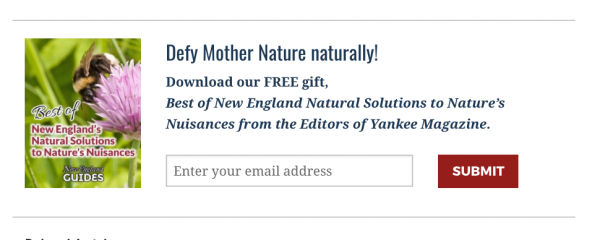
Mobile Floater Conversion Best Practices
- Does the page have a small pencil ad at the top of the page, or a placemat ad at the bottom? (A placemat ad is twice the size of a pencil ad, but adheres to the bottom of the page and is large enough to collect an email address).
- If not, does a more traditional floater wait until page 2 to appear?
- Does the floater have an easy to identify close button?
Example of a pencil ad:
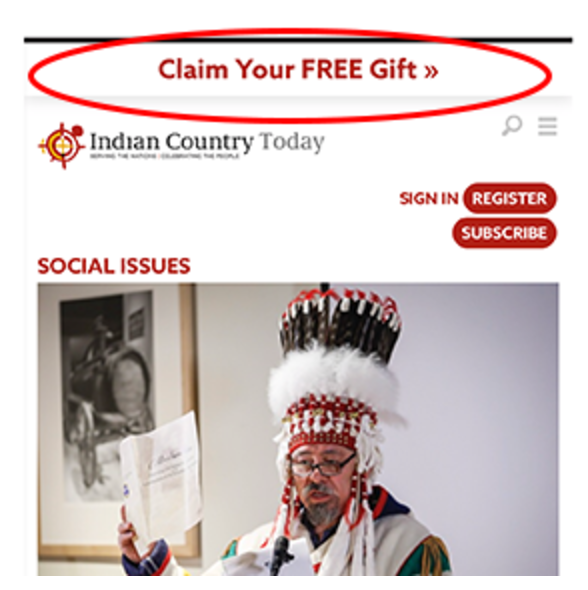
Example of a placemat ad, which is quickly replacing pencil ads:
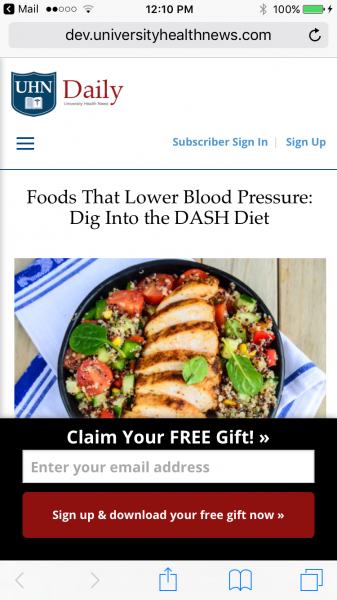
Mobile Text Ad Conversion Best Practices
- Does a related text ad appear approximately 100 words into each article?
- Do text ads always display a freebie categorically aligned to the content on the page?
- Does the text ad include an image of the free downloadable report?
- Does the text ad have an interactive email collection field that collects email upon first click and bypasses the data collection page?
Example:

Mobile OFIE Conversion Best Practices
- OFIE’s don’t appear on mobile pages. (See best practices for desktop OFIEs above) This is in response to Google’s request that publishers avoid using a layout where the above-the-fold portion of the page appears similar to a standalone interstitial.
In order to improve your email capture rates and product sales, a publisher can learn a lot from our latest best practices. These are based on what we’ve seen to work best with our clients as well as our publishing colleagues.
As a multiplatform magazine, your content, audience development and revenue teams, through the metrics of organization, technology & measurement, will continually build and improve. And if you work with us, you can do that with complete confidence that you’ll succeed. In the end, you increase value to your stakeholders, and also to investors, talent or potential acquirers – because everyone wants to be associated with an organization with popular content and that’s financially successful. Want to work with us? Schedule a time to chat.
